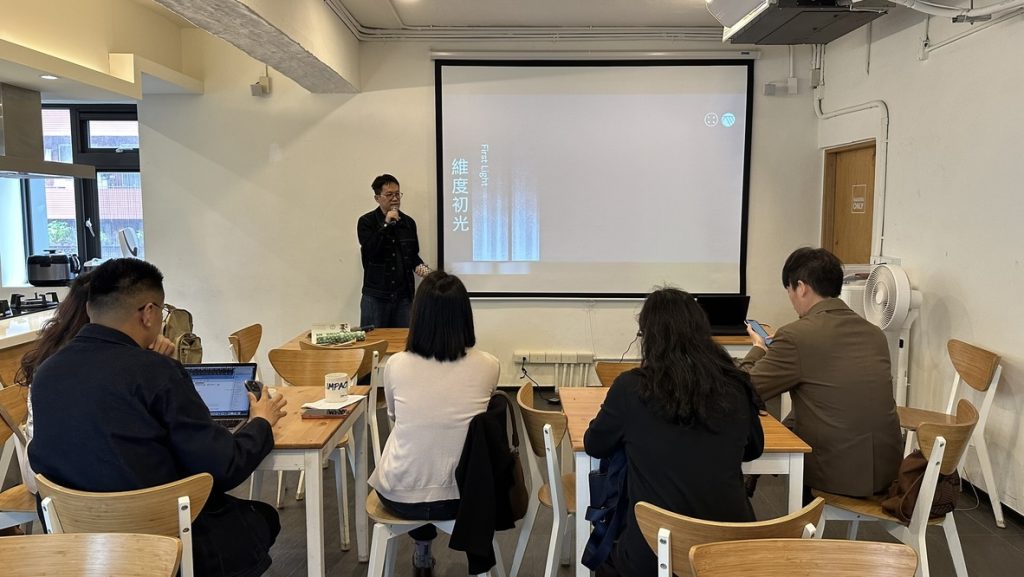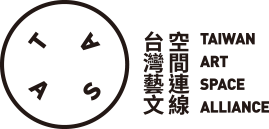By Li-Zhe JIAN, Richard
“First Light,” serving as the dialogue theme for this year’s TASA annual conference, was held on April 13, 2025, at Impact Hub Taipei NPO Hub. The event emphasized emerging perspectives and trajectories of action rather than established or known discourses, responding to the openness and complexity at the intersection of contemporary art and society through cross-border exchanges, local practices, and knowledge sharing. This narrative is not a conclusion but an invitation to discussion, unfolding a series of focused workshops that aim to untangle the unspoken knowledge boundaries already at work—a faint first light carrying the possibility of reconstructing the art world.
This workshop was moderated by Huang Sing-Da, Head of Research at the National Museum of History, focusing on artistic residencies as a form of cross-cultural and interdisciplinary dialogue. Starting from the concept of “the body as cultural carrier,” it examined how behaviors, habits, and bodily gestures become interfaces for accessing cultural memory. Echoing the “people-centered” philosophy in the United Nations Sustainable Development Goals (SDGs), the workshop encouraged participants to consider how arts and cultural workers can maintain physical and mental balance while in motion, foster friendly workplaces, and support sustainable creation. At the same time, the workshop discussed the importance of “rest” and “intervals”—the voids and reorganization in arts workplace environments—questioning how self-worth is redefined between movement and stillness in an era of cultural fluidity. The three speakers—Chen Yun-Chu, Assistant Researcher at the Taiwan-Asia Exchange Foundation; Li I-Hua, Director at the Coretronic Culture and Arts Foundation; and Yu Teng-Wei, freelance translator and writer—shared compelling insights and dialogues based on their experiences: the Spanish pilgrimage journey, the Fulbright exchange program, and overseas art travels in literary translation.
Chen Yun-Chu: Self-Exile and Reconciliation on the Pilgrimage
The Camino de Santiago is believed to be the route through which the remains of St. James (Santiago), one of Jesus’s apostles, were transported to the holy city of Santiago de Compostela in Spain, inspiring many Christians to walk this path in his honor. Chen Yun-Chu chose the Northern Route, which winds through Spain’s coastal areas and rolling mountains. She described this pilgrimage as a “sacred journey of self-exile,” a departure from a fixed life in pursuit of truth. Unlike the popular flat French Route (Camino Francés), she challenged herself with the more difficult Northern Route (Camino del Norte), which takes 30 to 40 days to complete its 800-kilometer length. The journey involved facing the challenges of finding beds in albergues (hostels), staying with a pilgrim’s passport (Credencial del Peregrino), but also offered opportunities to travel with like-minded companions and receive a certificate (Compostela) after reaching certain distances.
The motivation for starting this journey often comes from deep internal struggles—identity confusion, age anxiety, comparing oneself to others’ timelines, or facing seemingly insurmountable obstacles. Despite daily concerns about walking and finding a place to stay, it was through listening to others and engaging in conversations that opportunities arose to open up, understand, or resolve personal confusion. The journey was filled with moments of reflection: when lost, receiving guidance from stranger travelers made her wonder, “what identity do I use to introduce myself to the world?” and she pondered the connection between job titles and authentic self—how much can work roles truly represent who we are? In a setting with few Asian faces, deep talks with roommates helped her realize that “knowing who you are in your own way is enough.” Facing age-related anxiety about “what should be done at what age” and the pressure of feeling behind when seeing others wake early, she observed a calm Dutch woman and understood that everyone has their own timeline—there’s no such thing as being ahead or behind.
That feeling of “growing old before properly experiencing youth” seemed to settle after finishing the entire journey—she felt an unprecedented happiness, the result of reconciling with herself and engaging in deep inner conversation, recognizing that all experiences along the way, whether smooth or challenging, were “the best arrangements.” Like many pilgrims who leave behind stones brought from home, she too seemed to set down the stones in her heart, departing with a lighter spirit after completing this transformative journey of body, mind, and soul.
Li I-Hua: Using Light as Medium to Connect People, Environment, and Public Thinking
Li I-Hua’s sharing centered on her professional field—lighting environment design—and how she used the Fulbright Program to travel to New York City to enhance her cultural growth and deepen “public thinking and humanistic spirit.” She believes that good lighting design should connect the environment and people through light, applying increasingly advanced technology with a more friendly thinking.
To this end, her New York trip combined academic symposiums, institutional exchanges, and case studies. At the IES & DOE 2024 Research Symposium, she learned that the core idea of sustainable lighting environments is not technology but “continuously understanding humanity,” allowing light to create positive impacts on people and enabling lighting to have a positive influence on the environment. Visiting institutions like MoMA and exchanging with staff made her realize that the key to public outreach lies in “establishing connections with people”—sparking interest and integrating aesthetics into daily life rather than merely transmitting knowledge. Architecture, space, and environmental design must prioritize human experience, with the goal of lighting playing a role in sharing social responsibility. This approach aims to create more inclusive viewing environments that address public needs and respond to social conditions.
Practical investigations of cases like the High Line Park and Privately Owned Public Spaces (POPS) showed how urban planning creates surprises and interactions by shifting perspectives and actively using space. This journey also included deep personal experiences, such as childcare in America, adventures with her daughter, and visits to Amish communities that reject electricity. These experiences made her think about how modern technology, resource use, and protecting core values are connected, and how to “create margin in life” within Taiwan’s relatively high-stress environment.
Yu Teng-Wei: Building Community and Networks Through Translation and Art Travel
Freelance translator Yu Teng-Wei shared how overseas art travel experiences influence his work from a literary translation perspective. He noted that, as a translator, he found that online communication often struggles to create genuine connections. To address this, he organized an overseas apprenticeship program focused on both “literary translation” and “artistic knowledge.” He expanded his skills in the former by attending translation summer schools, participating in literary festivals, visiting venues related to literature, and meeting with other translators. Meanwhile, he enhanced his artistic and cultural understanding and observed discourse within art institutions to develop the latter. Although some activities shifted online due to the pandemic, he experienced firsthand in workshops how important community feedback is in overcoming the “not knowing if it’s good” dilemma when translating alone. He recognized that understanding subtle meanings in texts requires time.
Interactions with senior translators like Nicky Herman and Jeremy Tiang helped him understand Taiwan’s literary translation potential (abundant subsidies, few restrictions) and needs (requiring more translation, promoting indigenous literature, bringing foreign translators to Taiwan). Opportunities for direct dialogue with text authors further inspired deep thinking about the nature of work. These experiences led him to consider creating translator communities (such as Korea’s Smoking Tiger and the UK’s Translator Aloud), differences in domestic and international publishing practices, and the importance of building networks based on trust and quality.
This journey was not an endpoint; instead, it transformed into motivation for his subsequent participation in advanced literary workshops, involvement in the UK’s Strangers Press publishing project, residency applications, and continued translation work. Experiences like field visits to writers’ birthplace museums helped him more accurately approach authors’ tone and style in translation.
Gaps in Life: Rest and Intervals
The “First Light: Perception and Transmission—Re-exploring the Body as Cultural Carrier” workshop, through the experiences of three speakers with displacement, vividly demonstrated how arts workers seek self-positioning and establish meaningful connections amid the flow of culture, re-examining and redefining their own value between movement and staying still. This dialogue powerfully showed that the “body” is not only a carrier of cultural memory but also an active interface for creating new dialogue possibilities. “Rest” and “intervals,” in the context of a rapidly moving global era, are reestablished as essential elements for maintaining creative inspiration and practicing sustainable development.
What “First Light” captures are precisely the precious insights within these valuable processes—those initial, emerging realizations. It gently reminds us that whether the path involves walking, observing, listening, or textual translation, the body remains our direct way of perceiving the complex world, carrying rich culture, and forming real connections with others. Meanwhile, those seemingly blank moments of “rest” or “intervals” are not as leisurely as they seem but are actually key opportunities for integrating the inner self, settling thoughts, and finding future directions—much like a day of pilgrimage walking being a deep rest after sufficient exercise. Therefore, this dialogue is not only a reflection on artistic residency and cultural exchange models but also a consideration of how we try to expand practical methods within possible options in a rapidly changing world, maintaining an open mindset, seeking balance between body and mind, inner and outer, and courageously exploring inner vast spaces, ultimately moving toward a warm expectation and continuous calling toward a profound “state of rest.”

Wen-Tsao Lin, Secretary General of TASA, kicks off the workshop (photo).
簡立喆 Li-Zhe JIAN, Richard
Based in Taichung, Taiwan. Communication Specialist at the Taiwan Art Space Alliance (TASA). Graduate student in Art Education and Administration at National Taiwan Normal University. Interested in visual culture, art education, and experiential learning. E-mail: lizhur.j@gmail.com
